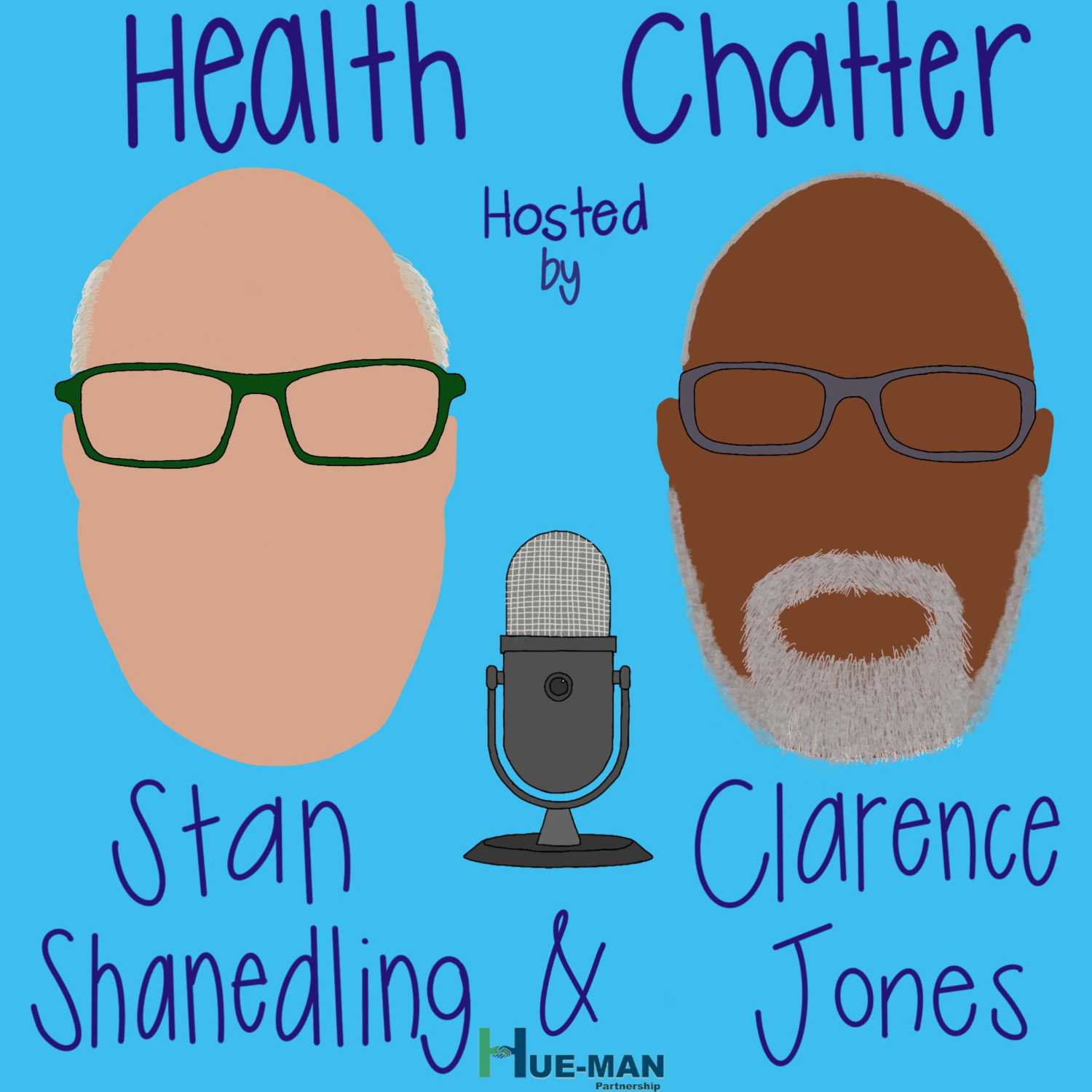April 25, 2022
What Is Health Communications?
The player is loading ...

Stan and Clarence sit down with Dr. Archelle Georgiou and Shawn Lewis to better understand health communications and related challenges, especially in the wake of COVID-19.
Discussion Topics + Research
- Guests
- Dr. Archelle Georgiou
- Chief Health Officer at Starkey
- Responsible for Starkey’s initiative to improve individuals’ overall wellness and quality of life through products and better hearing
- Nationally recognized physician, author, medical executive and health reporter
- Chief Medical Officer of UnitedHealth Group from 1995 to 2007
- MD from Johns Hopkins
- Shawn Lewis
- Project Coordinator at Minneapolis Parks Foundation
- “Minister of information”
- Information specialist for the Workforce Development Department at the Minneapolis Urban League (2017)
- Previous grant writer for United Way
- Attended the University of Minnesota & grew up in south Minneapolis
- Research
- What is health communication?
- “Health communication is an area of study that examines how the use of different communication strategies can keep people informed about their health and influence their behavior so they can live healthier lives” (Tulane School of Public Health)
- Types of health communication
- Health education
- Health advocacy
- Risk communication
- Crisis & outbreak communication
- Why is health communication so challenging?
- Health information and messages are often overly complex, making them hard to understand and use (U.S Department of Health and Human Services)
- Prioritization of medical models/treatment over prevention/determinants of health
- Communication suffers when no coordination between initiatives
- Communication suffers during restructuring and reorganization
- “Top 6 Challenges of Healthcare Industry”
- Outdated technology
- Mishandling of protected information
- Staff vacancies
- Timely delivery of information
- Communicating outbreaks, lockdowns, evacuation, missing patients, etc. to employees and stakeholders (i.e. critical communication)
- Communication regarding dangerous situations like natural disasters, bomb threats, active shooters, etc.
- In what areas do you think we failed the most at health communications?
- Prioritizing health equity & cultural competence
- Accessibility
- Health literacy
- What is it?
- Affects 9 out of 10 adults (CDC)
- Two Definitions
- Personal health literacy: the degree to which individuals have the ability to find, understand, and use information and services to inform health-related decisions and actions for themselves and others (CDC)
- Organizational health literacy: the degree to which organizations equitably enable individuals to find, understand, and use information and services to inform health-related decisions and actions for themselves and others (CDC)
- “Health literacy is a complex phenomenon that involves individuals, families, communities and systems. The concept of health literacy encompasses the materials, environments, and challenges specifically associated with disease prevention and health promotion” (National Institutes of Health)
- How do we increase health literacy?
- National Action Plan to Improve Health Literacy
- Developed by U.S Department of Health and Human Services
- Seeks to engage organizations, professionals, policymakers, communities, individuals, and families in a linked, multi-sector effort to improve health literacy
- Blueprint for organizations, companies, etc.
- Based on the principles that (1) everyone has the right to health information that helps them make informed decisions and (2) health services should be delivered in ways that are understandable and beneficial to health, longevity, and quality of life
- CDC’s Health Literacy Action Plan
- Adapted from National Action Plan
- CDC created a health literacy plan to improve how we develop and share health information and provide public health services to different audiences
- Includes goals surrounding access to information, integrating communication and literacy into public health planning/funding/policies/research/evaluation, and incorporating accurate health and science information into all levels of education
- Resources
- https://www.onsolve.com/blog/the-top-6-communication-challenges-of-the-healthcare-industry-and-how-to-overcome-them/
- https://data.unaids.org/pub/presentation/2007/broad-challenges-in-health-communication_en.pdf
- https://health.gov/healthypeople/objectives-and-data/browse-objectives/health-communication
- https://publichealth.tulane.edu/blog/health-communication-effective-strategies/
- https://www.cdc.gov/healthliteracy/planact/national.html
- https://www.cdc.gov/healthliteracy/planact/cdcplan.html
- https://www.cdc.gov/healthliteracy/learn/index.html
- https://www.nih.gov/institutes-nih/nih-office-director/office-communications-public-liaison/clear-communication/health-literacy



